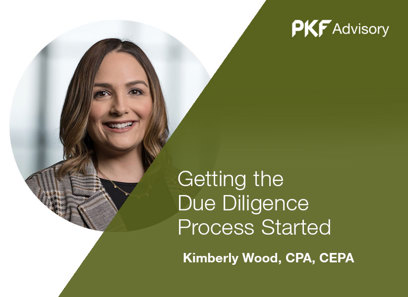Methods to Deepen Understanding PPA Allocation
Wiki Article
A Comprehensive Guide to Comprehending Purchase Price Allocation in Mergers and Acquisitions
Understanding Purchase Price Allocation (PPA) is crucial in the world of mergings and purchases, as it directly impacts economic coverage and tactical decision-making. By accurately dispersing the acquisition cost among recognizable possessions and obligations, organizations can guarantee compliance with audit requirements while maximizing their economic results.Definition of Purchase Price Allocation

The PPA process commonly begins with the identification of the purchase day, after which the acquirer has to determine the overall purchase cost. This total consists of not only cash payments but also any type of contingent factor to consider, supply transfers, and responsibilities thought. The following action entails allocating this purchase price to the fair value of each identifiable possession and obligation, which can consist of property, devices, intellectual building, and other abstract assets.
Moreover, any excess purchase price beyond the reasonable value of identifiable internet possessions is categorized as goodwill. Precise PPA is vital as it affects monetary reporting, tax effects, and future earnings estimates. By adhering to appropriate audit criteria, such as IFRS 3 or ASC 805, companies ensure conformity and openness in monetary reporting, which is essential for stakeholders and investors.
Relevance of PPA in M&A
Exact purchase cost appropriation (PPA) plays a significant function in mergings and purchases, affecting different elements of the deal's monetary and functional outcomes. Properly implemented PPA ensures that the acquisition rate is properly dispersed amongst the recognizable properties gotten and obligations assumed, supplying a clear image of the financial investment's value. This allowance is crucial for monetary coverage and compliance with accountancy criteria, as it directly affects the acquirer's annual report and income statement.
In Addition, PPA has implications for tax factors to consider. By accurately identifying abstract properties and their respective values, business can maximize amortization timetables and tax deductions, eventually influencing their cash money flow. Furthermore, a well-structured PPA can improve the understanding of harmonies prepared for from the transaction, directing calculated decision-making post-acquisition.
In the affordable landscape of M&A, reliable PPA can additionally promote arrangements, as it offers clearness and openness pertaining to the evaluation and well worth of the target business. This accuracy can cultivate trust fund amongst stakeholders and add to smoother assimilation procedures. Inevitably, the importance of PPA in M&A can not be overstated, as it lays the foundation for audio economic monitoring and critical development campaigns adhering to the purchase.
Secret Components of PPA
An extensive understanding of the crucial elements of purchase cost allowance (PPA) is necessary for efficiently taking care of the intricacies of mergings and purchases. The main elements of PPA include the recognition of the purchase rate, the reasonable value assessment of acquired properties and obligations, and the subsequent classification of these elements.Initially, the acquisition rate represents the total factor to consider transferred by the acquirer, consisting of cash money, stock, and various other types of compensation. Next, the reasonable worth of gotten recognizable possessions and responsibilities need to be figured out, which usually includes tangible assets such as home and devices, along with intangible properties like trademarks, licenses, and client relationships. Exact evaluation is critical, as it affects financial coverage and tax ramifications.
Additionally, responsibilities assumed in the purchase, including contingent responsibilities and financial obligation, have to be evaluated at reasonable value. The distinction between the overall acquisition cost and the reasonable worths of identifiable properties and liabilities leads to a good reputation, which shows the costs paid for synergies and capacities not separately recognizable. Recognizing these components makes certain conformity with bookkeeping criteria and enhances tactical decision-making throughout the M&A procedure.
Methodologies for PPA
Various methods are used to conduct purchase cost appropriation (PPA), each offering distinct techniques to valuing gotten properties and liabilities - Understanding Purchase Price Allocation. The most usual approaches consist of the price approach, market method, and earnings methodThe expense strategy concentrates on the substitute price of the assets, estimating what it would certainly take to recreate the asset in its current condition. This method is particularly helpful for tangible assets, such as residential property and devices.

The earnings method, on the various other hand, highlights the existing worth of future capital expected to be generated by the properties. This method is especially pertinent for intangible properties, such as licenses and trademarks, where future performance can be projected.
Selecting the proper approach depends upon the nature of the obtained properties, market problems, and the particular context of the purchase. Employing a mix of these approaches might also generate a more comprehensive sight of the reasonable value of the properties and liabilities included.
Ideal Practices for Effective PPA
Exactly how can organizations make certain a seamless acquisition rate allotment (PPA) procedure? Implementing finest techniques is essential for achieving accuracy and conformity. Initially, organizations ought to develop a clear structure that defines roles and duties throughout the PPA process. This consists of identifying key stakeholders-- such as financing, lawful, and functional groups-- that will certainly add to data collection and analysis.Second, organizations need to gather detailed and reliable data associated with the acquired Understanding PPA Allocation assets and obligations. This includes performing thorough due persistance to analyze reasonable worth and accounting effects accurately. Utilizing third-party evaluation experts can improve objectivity and make certain adherence to relevant accounting criteria.
Moreover, it is important to keep open lines of interaction among all parties involved. Normal conferences can facilitate the exchange of insights and address any kind of possible inconsistencies early in the process.
Lastly, companies must document all assumptions, approaches, and searchings for diligently. This not only aids in conformity but additionally works as a recommendation for future acquisitions - Purchase Price Allocation. By adhering to these finest techniques, companies can improve the efficiency and performance of their PPA process, inevitably supporting far better monetary coverage and tactical decision-making
Conclusion
In conclusion, Purchase Price Allocation (PPA) is a vital procedure in mergings and procurements that makes sure exact appraisal of recognizable possessions and responsibilities. Reliable PPA not only optimizes financial reporting and tax ramifications however additionally reinforces the critical structure of the getting entity.Report this wiki page